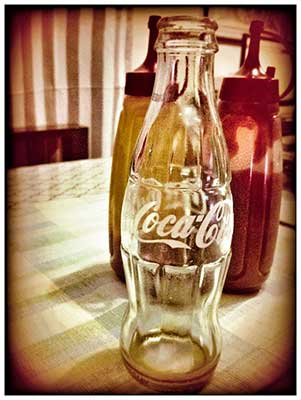
The 5 Most Common Misconceptions About Business Branding
Posted Dec 8, 2015 | Updated 9 years ago
There’s a lot of talk about branding, but what does it really mean for a small business?
Is it really necessary to develop ideas for branding your business and spend valuable time and money on branding when both are in short supply?
The answer is yes.
Any business that survives long enough will be branded to some extent, either by themselves, the competition, or a catastrophic event such as the BP oil spill in the Gulf of Mexico.
The oil spill undid many years of positive branding, leading to an ongoing attempt to rebrand the company.
“The Most Common Misconceptions About Business Branding” could fill a book, but the five most common misconceptions are described below.
1. Business Branding is Not Marketing
![]() The iconic Budweiser Clydesdales represent one of the best examples of a business brand.
The iconic Budweiser Clydesdales represent one of the best examples of a business brand.
The Clydesdales and Budweiser have been together since 1933, when the Busch sons gave two teams of Clydesdales and beer wagons to their father to celebrate the end of Prohibition.
It was an emotional event, driving everyone to tears (coining the phrase, “crying in your beer”).
The Clydesdale ads are about loyalty, tradition, persistence and family; they are emphasizing and repeating Budweiser’s brand, mission and corporate culture, not talking about a sale on Bud Lite.
An in-store promotion would be marketing, not branding.
Marketing normally centers on a series of short-lived campaigns and promotions.
The business brand is a subtle, but significant, unchanging background for marketing campaigns.
 Marketing and branding clashed when Coca-Cola decided to replace or “improve” their existing cola formula with “New Coke” in 1985.
Marketing and branding clashed when Coca-Cola decided to replace or “improve” their existing cola formula with “New Coke” in 1985.
When Coke announced their upcoming change, this marketing campaign clashed with tradition, an important element of their brand.
People had an emotional connection to “their” Coke and hated New Coke without ever tasting it, launching a successful grass-roots campaign which forced the company to bring back “Classic Coke.”
Today, you find Classic Coke on supermarket shelves, but New Coke is nowhere to be found.
Branding represents the heart and soul of the company while marketing is a change of clothes. Both matter.
2. The Business Owner isn’t the Ultimate Authority on the Brand, the Customers Are
Apple has been extraordinarily successful at branding themselves as technological innovators.
 People don’t live on the sidewalk for days because they desperately need the new product.
People don’t live on the sidewalk for days because they desperately need the new product.
Most users don’t know about many, if not most, of the features of their current iPhones.
Customers want to associate themselves with innovation, being first with the best.
People develop a sense of ownership for and loyalty to a successful brand.
The definition of business branding varies but, in general, a business’s brand is what comes to mind when you think of the company, either good or bad.
Volkswagen’s brand was always concerned with honesty and reliability.
Their current scandal about cheating with emission controls directly impacts their brand. Loyal customers feel betrayed, as Coca-Cola learned with New Coke.
Rebranding is possible, but it’s far better to give serious thought to what your business brand should represent and not have to change it later.
3. Branding isn’t One-Size-Fits-All, but is Unique for Each Business
Developing a brand takes considerable thought.
It is not accomplished by picking the company colors and designing a logo on a napkin.
Start by asking a series of questions.
These business branding guidelines will define the company mission and form the skeleton of the company’s brand.
- What was the reason for starting this business?
- Who are the people the business will help (the target demographic)?
- How will this business help those people?
- Why does it matter to you?
- What values should this business represent? These core values will become the mission statement and should permeate the business. Customers will rely upon these values, an integral part of the brand, and will demand that the company uphold these values. Ask BP, Coca-Cola, or Volkswagen if maintaining these values is important.
- Should the “voice” of the brand be fun (Disney), formal (IBM), elegant (Tiffany), cutting-edge (Apple), helpful (Home Depot) or something else entirely? A Chevy dealership is approachable in tone while a Rolls-Royce dealer targets the elite.
- These core values should define the company culture. If honesty is touted in the mission statement, customer service people must be truthful with customers. Google became well-known for a company culture that encouraged creativity.
4. Branding is Not a One-Time Thing
Branding happens every day, in every action between the business and a customer.
- Millennials purchase almost as much based upon the brand (69%) as upon the product (77%).
- Website content drives brand loyalty for 62% of millennials.
- A bad customer experience will cause 65% of consumers to cut ties with the brand.
5. The Company Brand is Much More than the Logo
There are many elements to a brand, including the following business branding tools:
- The logo should be simple, including both the logo representing the company as a whole and any logos used for individual product lines.
- Company colors should also be simple, such as IBM’s blue and white or Coca-Cola’s red and white.
- The tagline is the phrase representing the business, such as “famous for outstanding customer service” or “everyday low prices.”
- The font and typography should be generally consistent, clear, and easily read.
- The same “voice” (formal, fun etc.) should be used on materials representing the brand.
- Images used by the business to represent the brand should be consistent.
Anyone who represents the brand, whether customer service representatives or warehouse personnel, should understand and exemplify the core values.
Drawing up a set of core values and building a brand won’t matter unless all of the employees know about and buy into the values represented by the brand.
A brand defines the “who,” “what,” and “how” of a business.
A new business should think about what they intend to be and express this with their brand.
An established business can clarify their purpose by developing their brand.
Increased focus on what matters the most will almost surely result in increased revenues and personal satisfaction.
